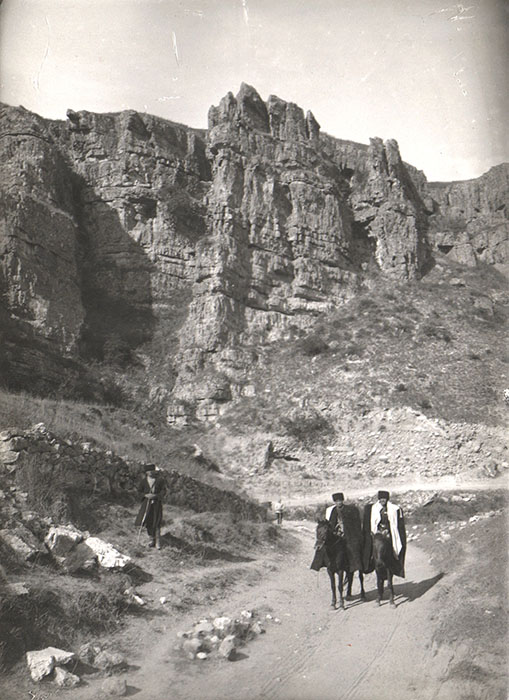'The Caucasus through a camera' photo exhibition was opened in the Stavropol State Museum-Reserve. It includes the photos from the museum, which were made in the late 19th and the 20th centuries. As they said in the museum, the Caucasus has become one of the favorite places for photographers in the late 19th century. Those days they were attracted by these exotic wild places. Picturesque rocks, wild mountain rivers, life and customs of the local people of different nationalities were captured by both Russian and foreign photographers. Unfortunately, there are not so many photos left till nowadays.
Rayev's roads

The Caucasus has always attracted travelers, explorers, scientists and artists. "In the late 19th and early 20th centuries, Raev published a series of photographic postcards with spectacular views of the Caucasus Mountains, Pyatigorsk and Kislovodsk," the head of the ethnographic department of the Stavropol State Museum-Reserve, Andrey Gordienko said. "He took many pictures of the famous roads of the Caucasus - the Georgian Military Road, the Military Sukhumi Road and the Ossetian Military Road. Grigory Ivanovich Raev traveled all over the Caucasus and even climbed Mount Elbrus. And yeah, it was possible to establish the authorship of the photos, which are stored in the Stavropol Museum, only in the case of Grigory Raev from Kislovodsk. A separate stand is dedicated to his works."
During the period from 1900 to 1918, Rayev published more than 30 series of postcards with the views of the Caucasus, mostly Caucasian Mineral Waters. In 1914, the photographer announced in a newspaper advertisement the sale of the entire collection, which consisted of two hundred postcards with views of the Caucasus. A black and white picture was worth five cents then - just like a loaf of bread. But hand-painted pictures costed 10 cents. Grigory Ivanovich took pictures of the Soviet Caucasus as well. In the 20s he took pictures of his little motherland and sent them to Moscow, where they printed postcards. Technical inventions of the 19th and 20th centuries allowed to witness the beauty of the region.

Horses as a way to get to school
There are many photos of the mountaineers life.
Balkar farmer
"Terekeme people are nomadic Azerbaijanis, Gordienko continues. - Historically, they are engaged in cattle breeding. Modern representatives of this ethnic group live in Azerbaijan and Dagestan".
A kid riding his donkey to school
Other pre-revolutionary photographs depict children from the Ossetian village Tsey, a Terek Cossack, Circassian women, residents of the Karachai village Hasaut, a Balkar in a field, etc. Some photographer took photo of the ancient tower in the Kabardian village Chegem in the beginning of the last century, his contemporaries "stopped a moment" in an Abaza village, "snatching" national dancers. An interesting photo depicts a resident of Chechnya, who dries corn in the oven.
Soviet photography is another series. Many photos were taken in the 20s and 30s. 'The First women's club', 'Women in the school of literacy', 'Poor people in the Shatoi bazaar' - these titles speak for themselves. There are photos of the 60s and 70s as well. They depict apartment buildings in Nalchik, a meeting of the former director of the Stavropol regional museum Benjamin Gosdanker with residents of one of the villages of Karachay-Cherkessia. An unexpected for this time picture of a boy from the village Uchkulan, riding a horse to school. Meanwhile, it was already 1969.






